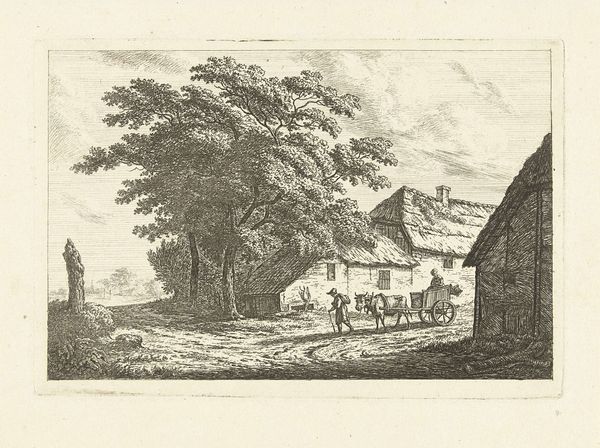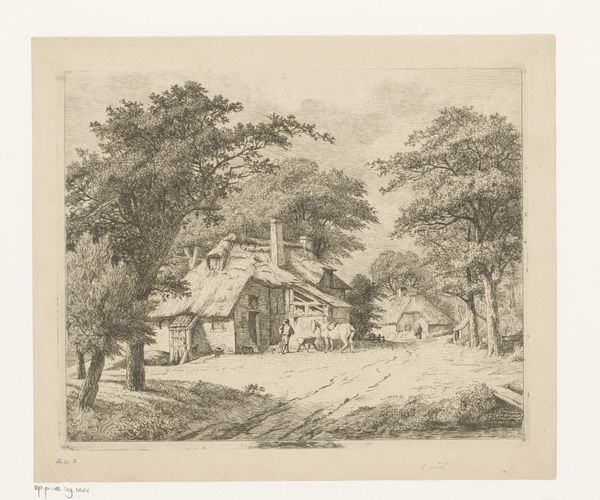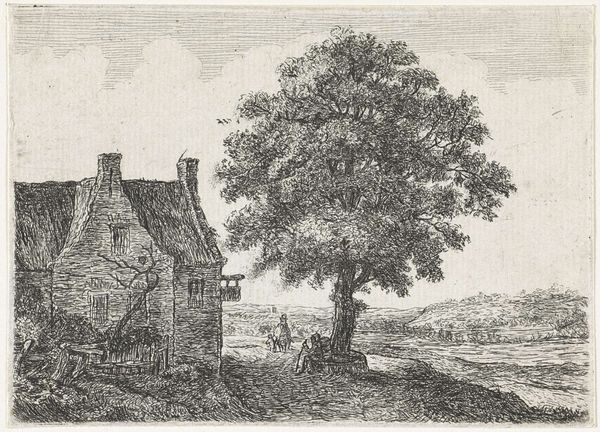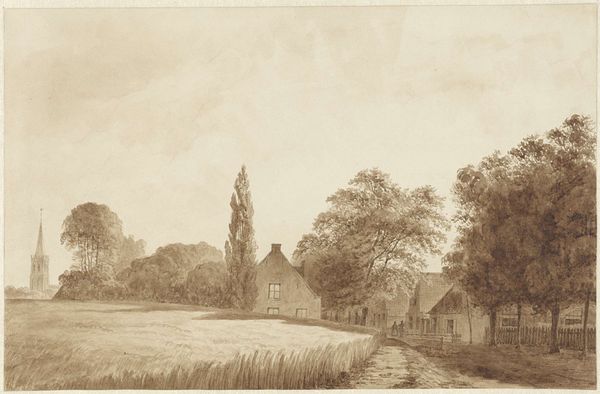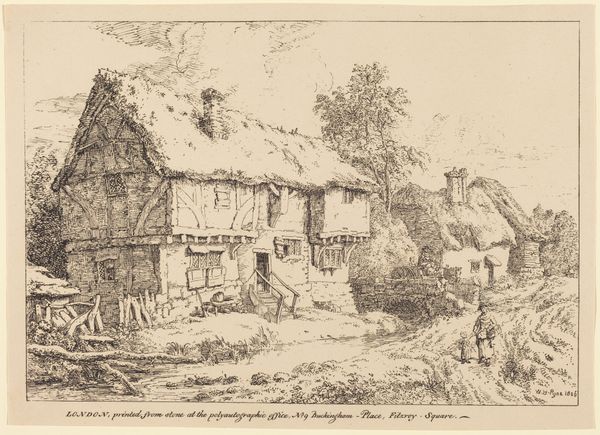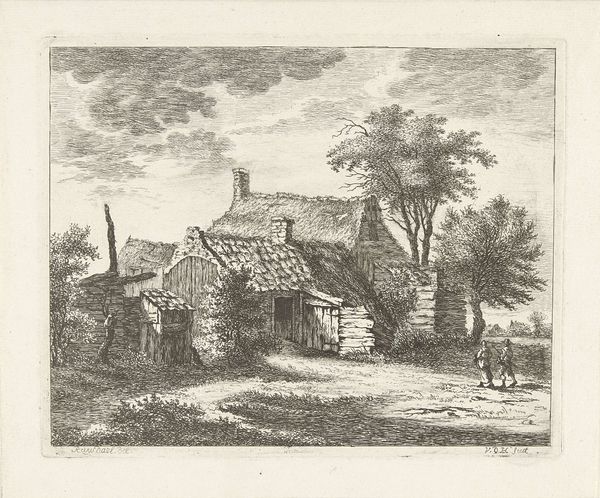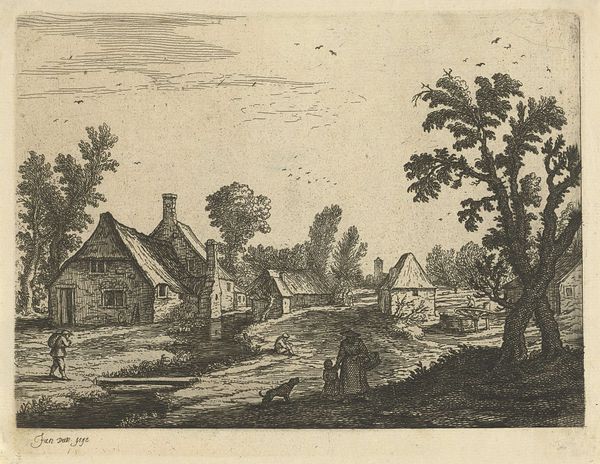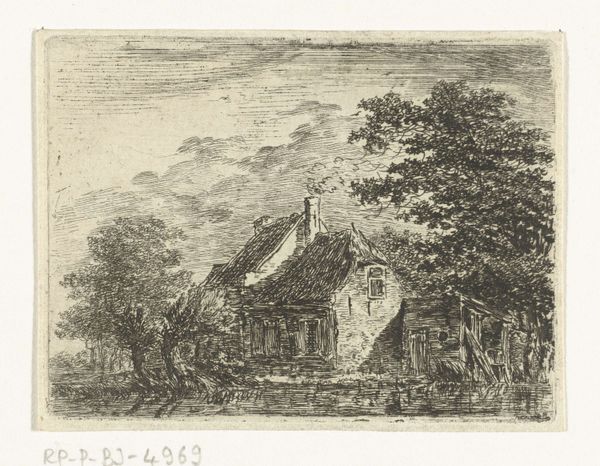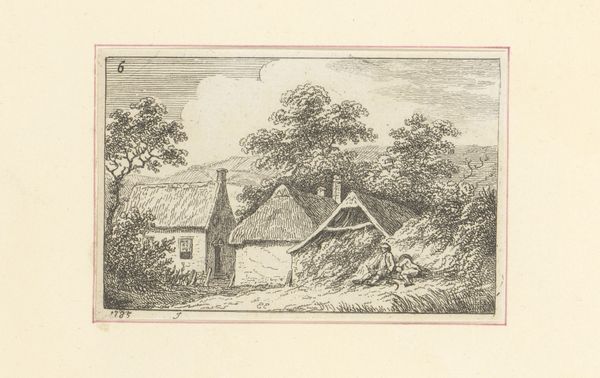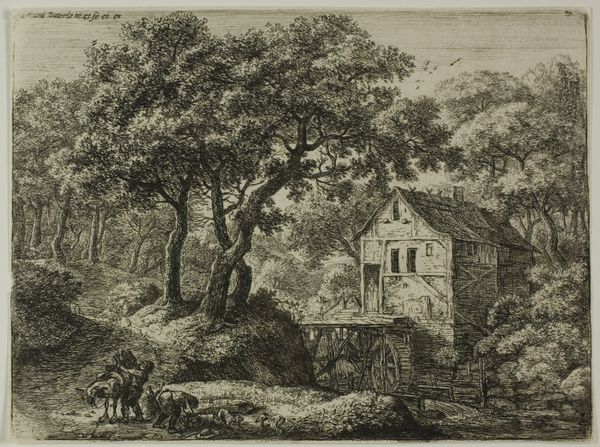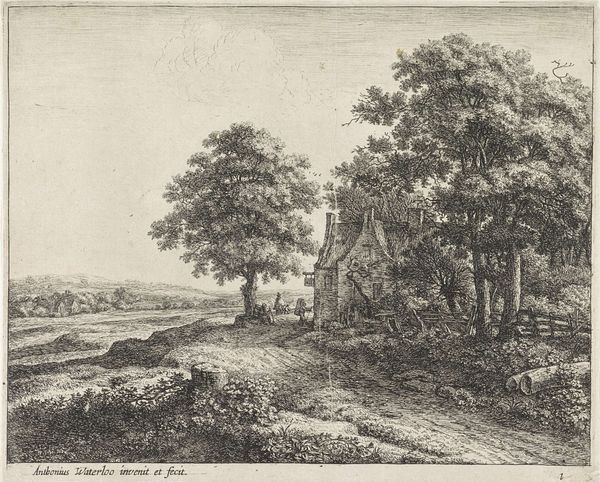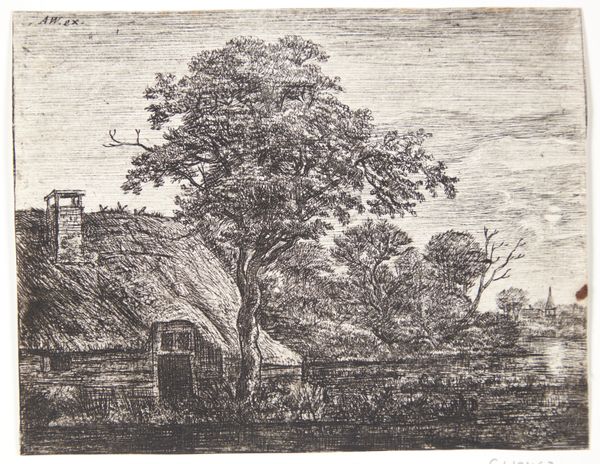
drawing, pencil, engraving
#
drawing
#
pen drawing
#
landscape
#
romanticism
#
pencil
#
line
#
engraving
#
realism
Dimensions: height 123 mm, width 170 mm
Copyright: Rijks Museum: Open Domain
Editor: This is Adrianus Serné’s "Weg in een landschap," or "Road in a Landscape," made around 1802 using pencil, pen and engraving techniques. It’s quite a detailed drawing. I'm immediately drawn to the serene and pastoral quality of the scene, like a moment frozen in time. What's your perspective on this work? Curator: Indeed. Viewing this through a historical lens, it reflects the Romantic era's fascination with nature, but more than that, it’s about constructing an ideal of the rural, especially at a time of burgeoning industrialization. Consider the social dynamics at play; who has the leisure to stroll through a landscape with a dog, versus those who are part of it, toiling, maybe out of sight in this image? Editor: That’s a really interesting point, about the construction of an ideal and the exclusion implied. It’s easy to just see a pretty picture. Curator: Exactly. Ask yourself: what narratives are prioritized and whose voices are marginalized by this romantic vision? The etching presents a seemingly timeless scene, yet art rarely exists in a vacuum. It's influenced and, in turn, influences the political and social currents of its time. Think about the role patrons might have played, and the function art had within Dutch society during that time. Editor: So, you're suggesting the piece may communicate specific socio-economic positions despite its apparent focus on the land. Is that common for landscape art of this period? Curator: Absolutely. Landscape became a powerful tool, especially for the elite. Images could reinforce ideas about ownership, control, and even national identity. Serné may or may not have intended a specific political statement, but the artwork nonetheless participates in the visual rhetoric of its era. Editor: I've certainly gained a new layer of understanding of this work. Looking beneath the surface beauty is important. Curator: Precisely. Considering the social and political backdrop enhances our appreciation and encourages a critical understanding of art’s role in society.
Comments
No comments
Be the first to comment and join the conversation on the ultimate creative platform.
